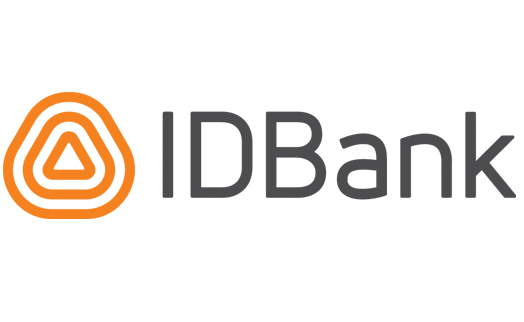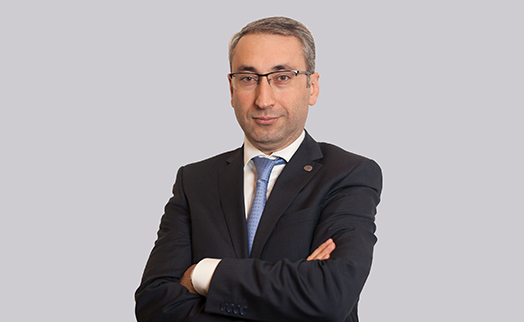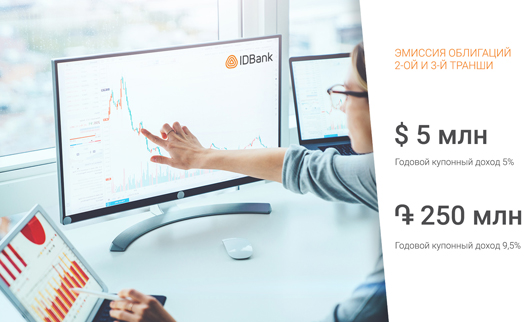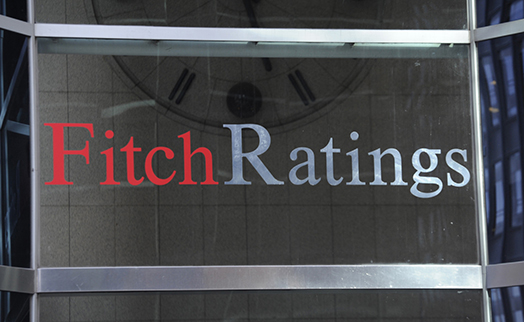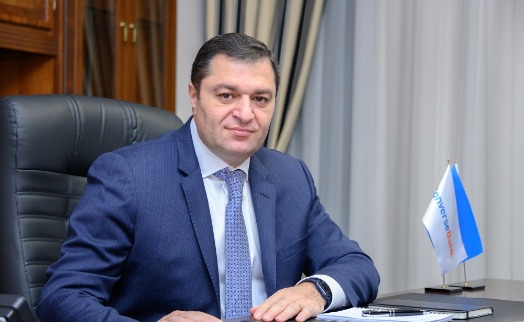29.01.2019 17:34

YEREVAN, January 29. /ARKA/. In an exclusive interview with ARKA news agency, Mher Abrahamyan, the Chairman of IDBank Management Board, speaks about the risks Armenian banks are likely to face in 2019, provides his outlook for the banking sector growth and the refinancing rate, and shares also his vision of changes IDBank is set to introduce this year.
ARKA - Mr. Abrahamyan, you were appointed to head the IDBank last December. What was the state of the bank when you took over its steer and what are the basic indicators the bank closed last year with?
M. Abrahamyan – Over the last 28 years the bank has gone through various development stages. There were successes and difficulties, which is natural. But when we look at the recent years’ trends, the dynamics of the bank, as a whole, has been positive. The indicators have improved considerably over the past two years. Overall, the indicators in 2018, as opposed to 2017, were quite steady. Last year was a year of stability for the bank, some major problems were resolved and conditions for further development and growth were created. The bank ended 2018 with a profit, the assets and the capital remained almost at the same level. Of the positive trends, I would like to point out a 10% increase in lending. But still a lot is to be done. According to our forecasts, in 2019 our figures are to improve considerably.
ARKA - What are your specific expectations in 2019? Will this year become a year of serious changes, which is natural given that the bank has a new manager and ambitious strategic tasks?
M. Abrahamyan – We have a positive basis to achieve our goals in 2019, there is also optimism. But that will require a lot of effort and work, as the competition in the banking sector is quite tough; on the other hand, our country has politically stabilized and therefore our expectations are quite positive; we think that this year will be more successful than the past one.
ARKA - The Fitch international rating agency expects Armenia’s banking sector growth to slow down in 2019. What are your expectations about this? What risks can Armenian banks face in 2019?
M. Abrahamyan - As for the Fitch forecasts, I am not familiar with them. But according to our forecasts, IDBank figures in 2019 will be better than those of 2018 in view of the developments that we had in the past year. We see no major risks for 2019. Viewed from the point of view of domestic developments, the expectations are generally positive. External risks are always there, but if you look at the economic trends, they in general are inconsistent; the forecasts for the US economy are more positive than the forecasts for Europe and Russia. But I don’t see any reasons for serious risks in 2019. However, if there are any significant shocks, then, given the stability of the Armenian banking system, we will be able to resist them.
ARKA - IMF and Fitch advise that the Central Bank of Armenia raise capital requirement standard or enforce capital supplements for the local banks. Do you think these recommendations are reasonable? Does the Armenian banking system need additional capital? What is the situation with the capitalization of IDBank?
M. Abrahamyan – The point in question is about capital adequacy ratio and the use of additional buffers, which is part of the Basel-3 component. We introduced one component of Basel-3 a couple of years ago. The second component, which is about additional buffers is to be yet introduced. The introduction of Basel -3 was prompted by the 2009 crisis bringing about the need to increase the stability of banks in terms of capital and to absorb possible risks. The Central Bank of Armenia is likely to introduce additional buffers in the coming months. But this process will be gradual stretching over a period of 5 years in order not to affect the banking business. Its goal in the long run is to have a more stable banking system in terms of capabilities to counter risks and shocks. This will give additional confidence to customers, and it is also important in terms of future financing of the economy. The point is about three buffers, in particular, a supplement for maintaining capital adequacy, a counter-cyclical supplement, as well as a supplement for systemically important banks. IDBank's capital adequacy ratio is high. If by the size of assets the bank is 7th in Armenia’s banking sector, in terms of capital adequacy we are third. This gives us confidence that in the future we will be able to quickly develop and grow.
ARKA – In the beginning of 2017, the Central Bank suspended monetary policy easing, setting the refinancing rate at 6%, which has been preserved to this day. Do you think this level of refinancing rate may effectively contribute to the growth of investments in the real economy, and do you think it may be revised in either way in the first half of the year or later and if yes what may prompt it?
M. Abrahamyan - The main task of the Central Bank is to ensure price stability, and for this purpose the refinancing rate is used as the main instrument of its policy, based on serious analyses, forecasts and scenarios. Given that we closed last year with low inflation, we think that a refinancing rate change should not be expected during the first half of the year. Depending on economic activity a change may occur in the second half of the year. But, according to our forecasts, the rate will not change significantly.
ARKA - In June 2018, the banks began the process of forgiving fines and penalties on bad individual loans. The restructuring of loans provided to military personnel may also occur. How do such processes affect the activities of banks, in particular, the IDBank?
M. Abrahamyan - I will say that this was an important decision, since banks are always interested in finding a compromise with customers. In fact, banks often use this option. But how is this decision important? Previously, when making a compromise, the bank not only suffered income loss, but also had to fulfill tax obligations. The decision in question has eased the burden, and banks will be more willing to make such changes in the future. We recently looked into how this decision affected our bank. IDBank entered into amicable contracts with approximately 1,200 clients and has forgiven about 850 million drams worth fines and penalties. At the same time, we evaluate positively the bank's performance over the past six months, and have already announced the extension of the process of forgiving fines for 6 another months for those who have not had time to contact the bank.
ARKA - What is the share of non-performing assets of your bank in the overall amount of such assets in the banking system? What measures does the bank plan to carry out to improve the quality of assets in the current year?
M. Abrahamyan - The rate of non-performing assets in the Armenian banking system is low. This is due, primarily, to strict requirements set by the regulator. Historically, Armenian banks have built effective risk containment infrastructure, including the Credit Bureau. The rate of non-performing assets is low also due to cautious policy of Armenia-based banks in comparison with other countries. If I am not mistaken, in the banking system non-performing assets account for only about 7%. In this regard, we are in quite favorable conditions. In the past, there were large bad loans. Now the bank is in the stage of cleaning the problem assets. We decided to start from a new page and go ahead. If we look at the loan portfolio of recent years, we evaluate it as very sound. But, of course, there are problems inherited from the past which affect today's performance.
ARKA - Armenian banks make significant contributions to thier reserve funds for possible loan losses (such expenses account for about 50% of their profits). What is the reason for this and how does this affect the cost of credit products?
M. Abrahamyan - Banks make contributions to their reserve funds as a safeguard against credit risks, in particular, overdue loans, when borrowers are unable to fulfill their obligations. In fact, these contrbutions lower the tax base, since this is unearned profit, and therefore is not subject to taxation. The interest rate of a loan includes several components, including credit risk. And the higher the risks, the more expensive the loan is. Of course, effective management involves reducing credit risk.
ARKA - How do you assess the overall competition in the market? How does IDBank navigate in this field? What does the bank place the focus on for attracting new customers?
M. Abrahamyan – The competition in the banking market is quite strong. This is one of the most competitive sectors of the Armenian economy. There is a struggle for each client, which, of course, has positive aspects, such as improving the quality of services, introducing new solutions, and using creative approaches. From this point of view, we welcome this competition and are ready for it. We pay great attention to both the quality of services and the introduction of new services to have our customers satisfied. The IDBank has adopted digital banking strategy. We will try to serve our customers quickly, provide clear and accessible services. We have made serious investments in new technologies, and in this sense we are ready for tough competition.
ARKA - At the end of May 2018, the bank conducted a complete rebranding focusing on manufacturability and enhancing innovative approaches. What innovations does IDBank use and what does it plan to introduce in the near future?
M. Abrahamyan - For the last two years we have been preparing for changes. This year we are going to launch the updated Internet banking service, there will be a new, very convenient and multifunctional mobile banking application, which, in our opinion, will become a boom for current and potential customers. From a technological point of view we have a number of projects which only a few banks in the local market can contest.
ARKA - What portion of the bank's customer are using digital products, in particular, mobile banking? How can digitalization contribute to the quality growth and popularization of banking products?
M. Abrahamyan – Digitalization of services and products is inevitable. Of course, there are customers who are used to traditional banking, but there is also a large group of clients, especially young people, who think digitally, partly, due to the shortage of time. By focusing on our target, strategic audience, i.e. those who prefer technological progress, we are always ready to serve all our customers. As for their portion, digitalization in Armenia is at a low level yet, but growth rates are encouraging. At the same time, worldwide annual growth of customers using digital services is 50-60%. In this context, we want to be a leading bank. –0-
Read the news first and discuss them in our Telegram
Tags:














